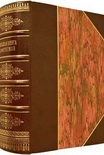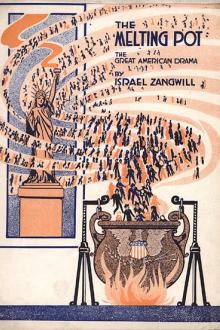No Modernism Without Lesbians, Diana Souhami [love books to read txt] 📗

- Author: Diana Souhami
Book online «No Modernism Without Lesbians, Diana Souhami [love books to read txt] 📗». Author Diana Souhami
For weeks prior to the opening night, curiosity about the opera built up. A reporter from the New York Herald Tribune came to a rehearsal and wrote a preview:
Arias and recitatives like no hymns that St Philip’s Protestant Episcopal Sunday School children ever sang are echoing through the old church building.
There was panic and tears when the orchestra arrived close to the opening night and their understanding of the score was different from that of the singers.
The opera had its premiere at the Atheneum on 7 February 1934. The gala audience wore evening dress and tiaras. The reviewer for the New York Herald Tribune wrote:
Since the Whiskey Rebellion4 and the Harvard Butter Riots5 there has never been anything like it. By Rolls Royce, by airplane, by Pullman compartment and for all we know by especially designed Cartier pogo stick, the smart set enthusiasts of the countryside converged on Hartford on Wednesday evening.
The New Haven Railroad ran special ‘parlor cars’ to ferry New York ‘fashionables’. Gershwin went to the opening night, and so did Toscanini, Cecil Beaton and Dorothy Parker. Carl Van Vechten and Mabel Dodge were there. So were Florine Stettheimer’s two sisters. So was Bryher. The engineer and designer Buckminster Fuller arrived in a three-wheeled Dymaxion car of his own design – an ‘omni-medium’ mode of transport he wanted to make fly – with the playwright and congresswoman Clare Boothe Luce and her friend the actress Dorothy Hale.
The show began with a roll of drums and the red velvet curtain opening on Saint Teresa The First in purple, played by Beatrice Robinson-Wayne backed by a chorus of angels and saints. The cellophane cyclorama dazzled and from the moment the chorus started with Gertrude’s immortal words
To know to know to love her so.
Four saints prepare for saints.
It makes it well fish.
Four saints it makes it well fish,
The evening was a dazzling success of sights, sound and spectacle. There were tangos, military marches, a dirge. There was no plot, but life’s modernist post-Christian narrative was, perhaps haphazardly, to begin, perform for a random time, then end. The seemingly nonsensical text offered not one narrative but many voices, different truths and liberated imaginations. It was an extravaganza that paralleled the first comprehensive American retrospective of Picasso.
Here was a truly innovative piece with all the ingredients of modernism, rules broken, meaning, content and symbolism revised. More than Ulysses, which was bound within the traditional covers of a book, more than Madame Matisse with a green stripe down her nose, here was the essence of the new. Music, theatre, language, all took on new meaning.
The audience was treated to a cast of African-American performers, a groundbreaking opera put on by influential gay cultural figures, a libretto by Gertrude Stein, composition by Virgil Thomson, experimental stage sets by a woman artist. Curtain calls went on and on. ‘A knockout and a wow’, Carl Van Vechten wrote to Gertrude, sad that she and Alice were not there.
The significance of the production was clear to Bryher:
It was the perfect moment for Four Saints to be performed… the evening remains for me one of the most triumphant nights that I have ever spent watching a stage. The Negro singers stood stiffly as in an eighteenth century painting of a courtly festival, there was a plaster lion though he had less to do than I had hoped, but Gertrude’s text soared out magnificently and with her, and our, rebellion against outworn art.
Reviewers used superlatives: ‘an overwhelming and inescapable success’, ‘the most enlightening theatrical experiment’… ‘A spirit of inspired madness animates the whole piece’, wrote the The New York Times. Kirk Askew and Julien Levy, both directors of modern art galleries, called it ‘a glorious and redemptive affirmation of a new national culture’: ‘We didn’t know anything so beautiful could be done in America.’ The New Republic said it was the most important theatrical event of the season and the ‘first pure, free theatre’.
The run was extended for two extra weeks, but the next show was pre-booked, so despite demand the run had to end. While fascism was eating at the heart of European civilization, Four Saints in Three Acts rang out – zany, inclusive, playful, joyful and open. It was fitting that it was produced in America, which at the time championed democracy and the unalienable right of every person to life, liberty and the pursuit of happiness. America was not America without African Americans, American Jews, American homosexuals, American lesbians and American zeal for new voices.
Without discernible narrative or plot, Four Saints spoke for an inclusive, diverse world. It was camp and outrageous, the coming together of unfettered imaginations in a spectacle that sloughed off the past and let everyone have a good time. For Gertrude, the production was a revolutionary breakthrough in communication of her work, an interacting of the two mediums of music and literature, a popularizing of literary modernism without compromising her style.
After its sold-out run at the Wadsworth Atheneum, the show transferred to Broadway, to the 44th Street Theater in New York, on 20 February 1934. Cast and crew had a week to adapt a production created for a 299-seat theatre to one of 1,400 seats. They worked all hours.
Two days before the sold-out opening night, a fire marshal, who had read enthusiastic accounts of Florine Stettheimer’s use of cellophane, came to inspect. He:
walked up to our highly publicized cellophane cyclorama, took out a penknife, cut off a strip, set a match to it and dropped it just in time to save his hand from being burned.
He condemned the whole set. Only when everything was coated with a non-inflammable paste, which affected colour and weight and dripped under the heat of the lights and made the cellophane sag, could the show proceed. Florine Stettheimer ironed the cellophane after





Comments (0)